Remembering God’s faithfulness and trusting Him for the future
The post Remembering God’s faithfulness and trusting Him for the future appeared first on World Vision.
The post A foundation of faith appeared first on World Vision.
Poverty is a social sickness that we can’t seem to cure. Even Jesus said, “The poor you will always have with you” (Matthew 26:11, NIV). We wonder, if the poor will always be with us, what’s the point in addressing poverty at all?
Poverty is both as ancient as pharaohs and as modern as smartphones. No matter any shift in politics, economics, or philosophy, poverty remains. Its very persistence can lull us into complacency. We can easily choose inaction from a deep sense of helplessness.
But if we could do something to address the issue of injustice in the world, would we? And why would we?
Bob Pierce, founder of World Vision, once said, “Don’t fail to do something just because you can’t do everything.” Many followers of Jesus have dedicated their lives to eradicating poverty. But for many of us, it can often be a little too easy to stay comfortable in our church communities — praying for the world’s needs but failing to follow prayer with action.
We may feel confident in our understanding of the gospel of Christ. We believe Jesus was born, lived, died, and was resurrected to reconcile us to God and bring us new life. While these truths are central to our faith, when we look to the teachings of Jesus, we may encounter a question: Does our response to poverty point to a missing component in our understanding of the gospel?
Rich Stearns, World Vision president emeritus, addresses this piercing question in his book, The Hole in Our Gospel. His premise is that if we claim to follow Jesus — the One who fed the hungry, healed the broken, and called the poor “blessed” — but ignore the suffering of His people, then we’re preaching an incomplete gospel.
But let us address the elephant in the room. There is no need to pack your bags for a guilt trip. Nor is there a reason to beat ourselves up. Rather, this is a call to arms — compassionate, Jesus-filled arms — that are ready to do the gritty, holy work of justice. It’s about waking up as the Church and doing good, hard, and healing work. Because poverty is not just a social issue — it’s a gospel issue.
The Church has the power to respond to extreme poverty. Even more, how our congregations respond to the call of the gospel can rewrite the course of history.

People often misunderstand poverty. In his book, Stearns writes, “Each of us brings different associations to the word poverty based on our past understandings and misunderstandings.” It’s tempting to reduce poverty to a simple economic issue — a lack of money, food, housing, or access to clean water. And while these are real and urgent needs, they only scratch the surface. Poverty is not just about empty wallets or bare cupboards. It’s about something deeper: a rupture in how things were meant to be. Poverty is the hum of brokenness under the noise of the world.
Many people mistakenly assign fault as well, beyond confusing what poverty is. Some believe poverty is caused by laziness, irresponsibility, or a failure to work hard enough. Others believe it’s solved with a job, a budget, or a new policy. These assumptions are clean, simple — and erroneous. They ignore the complexities of trauma, war, injustice, displacement, generational loss, and spiritual trauma or confusion. They miss the fact that a person can work three jobs and still not afford to live. They treat poverty like a math equation, assuming it has a simple, one-step solution. But Stearns tells us:
“Poverty is extremely complex. Picture the poor caught in a spiderweb of interwoven causes that trap them hopelessly while the marauding spiders of hunger, war, disease, ignorance, injustice, natural disasters, and exploitation prey upon them unrestrained.”
Extreme poverty is the most severe form of poverty, involving the acute deprivation of basic human needs. The technical definition of extreme poverty is living on less than $3.00 per person per day. According to the latest data, about 8.5% of people globally are estimated to be living in extreme poverty. That’s nearly 700 million people.

Poverty reflects the world’s brokenness. From a Christian perspective, it can be seen as an extended consequence of sin — reflecting broken relationships between humans and God, humans and one another, and humans and creation. When Adam and Eve turned from God, their relationships with Him, with one another, with the land, and even with themselves were torn. Poverty is the lingering aftershock of that tearing. It shows up in hunger and homelessness, yes — but also in loneliness, powerlessness, and hopelessness. It is not just the absence of material things; it is the absence of shalom — God’s wholeness, His peace, His intended design.
The good news is that God did not stay distant from this pain. Jesus entered it. He was born into poverty. Instead of being wrapped in royal silk, Christ was clothed in rags and lay on straw. He walked among the outcast, the beggar, the widow, the orphan. He told stories where the poor were heroes and the last were first. And He declared that in His kingdom, the poor in spirit — those who know their need — are blessed. Not pitied. Not blamed. But blessed.
The Church is called to see poverty through this lens. Not as something “other people” experience, but as something we are all touched by in one form or another. Material wealth does not mean spiritual wholeness. A person can be surrounded by abundance and still live in spiritual poverty. Conversely, a person in rags may possess a faith that could move mountains.
So, what is poverty? Among the many complexities contributing to it, it is a crack in the foundation of creation. It is a distortion of God’s image, a symptom of the fall. Enter Jesus, who came not only to forgive sins but to also restore what was lost. To bind up the brokenhearted. To bring good news to the poor. To lift the lowly and invite them to the banquet in the kingdom of God, where there is more than enough for everyone.
To address poverty, then, one is not merely called to give, but to enter into relationship. To recognize Christ in the face of the hungry, the unhoused, the overlooked. To listen before we speak, to serve without superiority, to give without expecting return. It is to partner with God in the holy, hard, beautiful work of restoration.
The global hunger crisis isn’t just a logistics problem; it’s a moral emergency. The Church, with its vast reach and even deeper calling, holds a powerful key to closing the door on extreme poverty. As St. Thomas Aquinas put it, “He who is dying of hunger must be fed rather than taught.” Before we offer sermons, we must offer sustenance. People don’t have mental space for spiritual conversations or practices when they’re in survival mode. A woman may not have time to go to church if she’s walking 6 kilometers each day to provide water for her family. A child may not feel comfortable going to Sunday school if they’re dirty from lacking clean water in which to bathe. But when we can meet physical needs — through food distributions, agricultural training, or other forms of support — we show Christ’s love and create space for spiritual needs to be met as well.
The Bible talks about poverty and caring for the poor a lot. In fact, Scripture mentions the subject more than 2,000 times. From the thundering prophets of the Old Testament to the quiet wisdom of the book of James, God makes one thing painfully clear: We can’t claim to know Him if we ignore the people He is forever pursuing.
Isaiah 1:17 says, “Learn to do right; seek justice. Defend the oppressed. Take up the cause of the fatherless; plead the case of the widow.” James 1:27 keeps it uncomfortably simple: “Religion that God our Father accepts as pure and faultless is this: to look after orphans and widows in their distress…”
We cannot forget Deuteronomy 15:11: “There will always be poor people in the land. Therefore I command you to be openhanded toward your fellow Israelites who are poor and needy in your land.” God is not simply giving us a heads-up that poverty exists; He’s giving us a path forward, calling us to open our hands, our hearts, our homes.
Jesus, too, had many words on the matter. He fed the hungry, touched the untouchables, and made room at His table for the folks nobody else wanted to invite. In Luke 4:18, Jesus gives His personal mission statement: “The Spirit of the Lord is on me, because he has anointed me to proclaim good news to the poor.”
Notice that Jesus said good news. Not “okay news.” Not “news you can ignore.” Good news! And if our gospel isn’t good news for the poor, then maybe it’s not the gospel at all.
Stearns says, “Being a Christian, or follower of Jesus, requires much more than just having a conversion experience or affirming a statement of belief.” In other words, faith without action is incomplete. It’s faith that’s missing the point. If our gospel has a hole where justice, compassion, and action should be, then it’s time to get out the needle and thread and start patching up the missing pieces.
Further in The Hole in Our Gospel, Stearns says: “It is crystal clear from Scripture that God loves the poor while hating their poverty, the man-made actions that contribute to it, and the apathy of the ‘well-off’ who allow it to persist.”
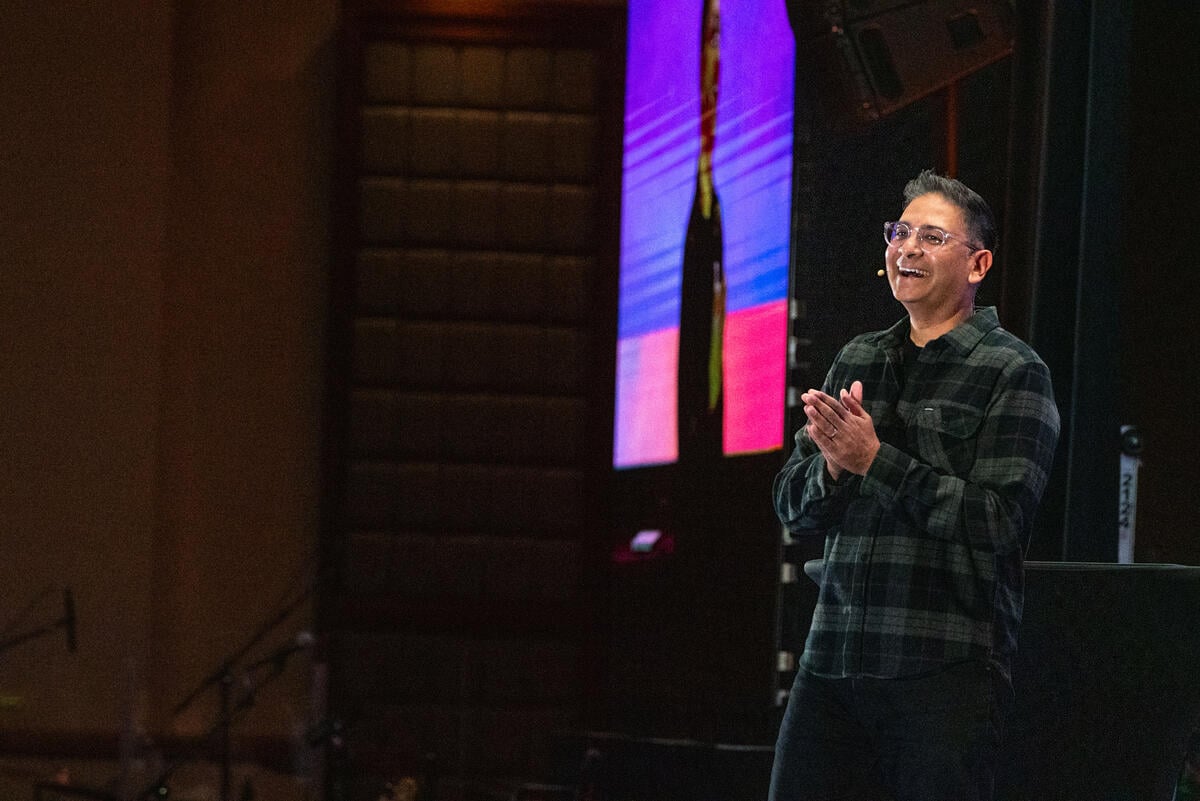
An anonymous writer once crafted an imaginary conversation with a friend. “Sometimes I would like to ask God why He allows poverty, suffering, and injustice when He could do something about it,” he imagined saying to a friend. The friend responded, “Well, why don’t you ask Him?”
“Because I’m afraid He would ask me the same question.”
An honest look will reveal the Church has sometimes been like that one friend who says, “Let me know how I can help!” — and then disappears faster than snickerdoodles at the school bake sale. According to a 2001 study, Christians make up 33% of the world’s population, receive 53% of the world’s annual income, and spend 98% of their wealth on themselves. Only .01% of all Christian giving is directed toward mission efforts. While this study is over 20 years old, its findings are just as striking to us today.
If generosity is an indicator of our involvement, then this data suggests that the Church is taking a back seat in kingdom work. But when the Church does show up, the results are nothing short of miraculous.
For more than 75 years, World Vision has been witnessing this firsthand. Today, local churches around the globe have become centers of transformation through faith-driven partnerships. Not because they have big budgets, significant donations, or flashy programs, but because they understand that loving their neighbors means taking action, and doing more than offering thoughts and prayers.
Churches are uniquely positioned to help end extreme poverty because they are embedded in communities all over the world. The local body of Christ is rooted, trusted, and consistent. That kind of presence can’t be bought or manufactured. It’s cultivated through years of weddings, births, baptisms, graduations, funerals, prayer meetings, potlucks, neighborhood walks, and of course weekly Sunday gatherings.
In many parts of the world, the local church is the most stable and reliable institution around. Schools may close. Clinics may run out of medicine. Governments may overlook the needy. But the church doors stay open. That consistency makes churches powerful partners in long-term efforts to alleviate poverty.
World Vision’s model leans into this strength. We listen. We learn. And we walk alongside churches already doing the work, helping equip them with training, tools, and support to amplify their impact.
From tiny villages in Malawi to megachurches in California, congregations are taking on the giants of hunger, disease, lack of education, and hopelessness. Not because they have the answers, but because they are asking the question from those wristbands of another era: What would Jesus do?
Let’s not forget that spiritual poverty often walks hand-in-hand with physical need. Churches don’t just deliver aid — they help foster hope. They carry the message that each person is made in the image of God, loved beyond measure, and not forgotten.
Stearns wrote, “If your personal faith in Christ has no positive outward expression, then your faith has a hole in it.” But the good news is that the Church can be the holy patch that mends that tear. And the better news? The more we patch, the more we resemble Christ.
This is kingdom work, no doubt about it. It’s justice with hands and feet. It’s the Church waking up, standing tall, and proclaiming to a weary world: You are not alone. We see you. And we’re coming alongside with the reminder that Jesus is here.
Local and global giving is essential in the effort to end extreme poverty. Churches can designate funds to support global partners, adopt struggling communities, or respond to emergencies and support long-term needs through trusted organizations like World Vision. But generosity doesn’t stop with collection baskets. It means organizing food drives, supporting local shelters, and remembering that “love thy neighbor” includes both the family next door and the child in another nation. Stearns wrote in The Hole in Our Gospel,
“This gospel—the whole gospel—means much more than the personal salvation of individuals. It means a social revolution.”
To revolutionize a broken world, we have to take Sunday morning sermons into the streets. We have to take the love we preach and put it on the road — into villages, towns, deserts, and urban centers. We must offer hope in every place where hope is gasping for breath.
Ending extreme poverty is possible.
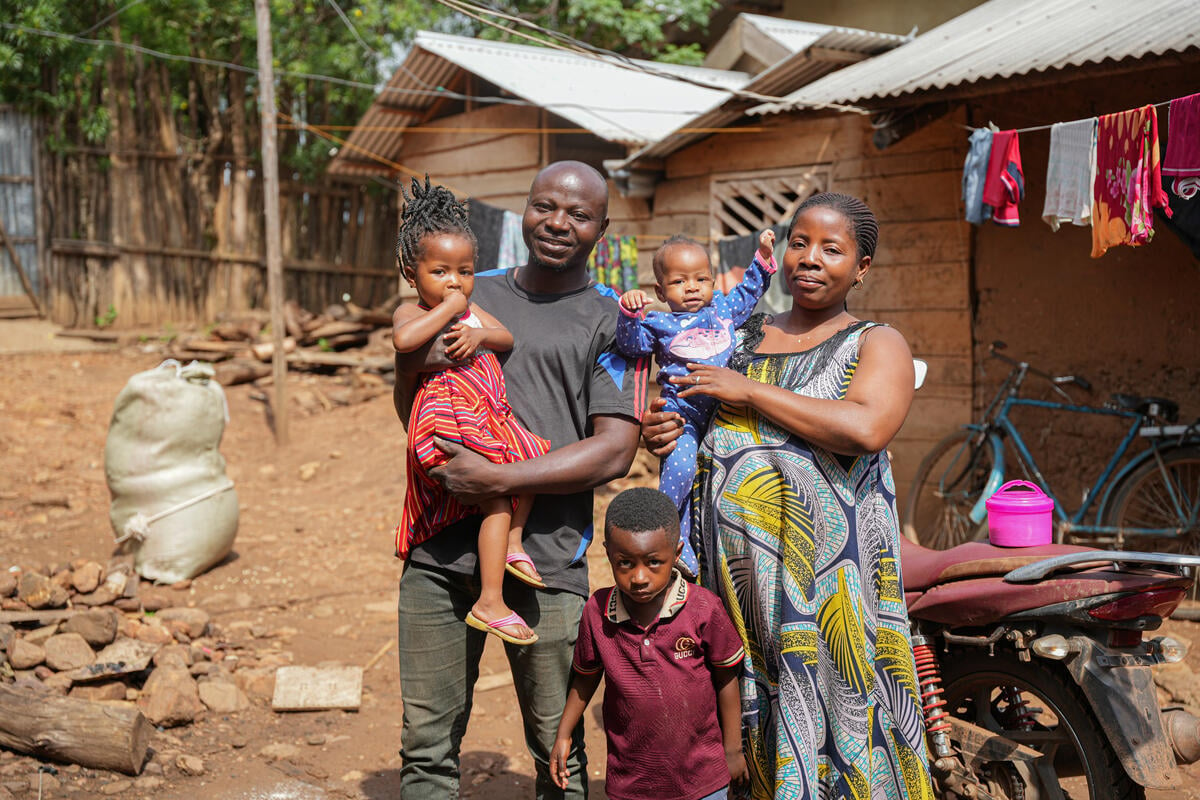
When faced with such a persistent problem, it’s easy to feel powerless. But we must remember: it is possible to end extreme poverty — maybe even in our lifetime! Recent history provides the proof. The percentage of the world’s workers living in extreme poverty recently fell by half, from 14.3% in 2010 to 7.1% in 2019. Humanitarian organizations were even working toward the goal of ending extreme poverty by 2030. Unfortunately, COVID-19 happened. In 2020, the percentage of people living in extreme poverty rose for the first time in two decades.
Rather than being disheartened, we can find motivation.
In just five years, together with partners and donors, World Vision has impacted the lives of over 200 million vulnerable children by tackling the root causes of poverty. This is compelling evidence that the mission is not only possible, but progress is happening right now.
Extreme poverty isn’t just about money. It’s about powerlessness. It’s about being told you don’t matter. It’s about hearing “no” in every language — no food, no school, no doctor, no future.
But the Church knows a better Author. One who turns “no” into “yes” and “not yet” into “watch what I can do.”
The Church’s response to extreme poverty helps us all understand what it looks like to follow Jesus. It’s not reserved for missionaries in distant lands. It’s for every believer who’s ever uttered the prayer, “Lord, here am I. Send me.” And sometimes, the sending looks like writing a check. Sometimes it looks like sponsoring a child. And sometimes it looks like speaking up, advocating for needs to be met.
Jesus didn’t pass the poor on His way to somewhere more important. He stopped. He healed. He listened. He told stories that flipped the long-standing tables of power.
This is the model.
The Church’s response to extreme poverty must be steeped in both prayer and action. It must be as local as your own zip code and as global as God’s kingdom. It must challenge comfort and invite community. It may be inconvenient and unglamorous, but it’s always wildly beautiful.
Because here’s the thing about serving the poor: You’ll find Jesus there. In the tears. In the resilience. In the joy that makes no economic sense.
If you want to meet Christ, follow Him into the margins. If you want to be the Church, feed His sheep. Clothe His children. Defend His beloved. Not just in theory — but in sweat, in sacrifice, in solidarity.
Let’s fill the hole in our gospel. Let’s be a Church that doesn’t just believe, but becomes. Becomes the good news for those who’ve only known hard times.
Because when we respond to poverty with love, justice, and unshakable faith, we don’t just change the world, we reveal the kingdom of Jesus.

The work of alleviating poverty is both deeply spiritual and surprisingly practical. When churches commit to action, they ignite hope. And when that hope spreads, lives change. Here are some meaningful ways that churches can make a difference in the fight against poverty.
When disaster strikes, poverty digs in, and its roots in communities become that much deeper. But the church has the power to interrupt this cycle. By supporting emergency response programs, congregations extend Christ’s compassion in the most urgent moments, providing food, shelter, and safety that protect families from slipping further into hardship. When communities recover faster and stronger, children can return to school, parents can rebuild livelihoods, and hope rushes in where despair once threatened. In responding to crisis, the Church becomes a living answer to prayer — and a vital partner in breaking poverty’s grip on our world.
World Vision offers congregations a variety of meaningful ways to come alongside children and families in need. One of the most personal and transformative ways is through child sponsorship. Through sponsorship church members are connected directly with a child, providing not just resources but relationships that transform lives — both there and here. But that’s only the beginning. Some churches choose to focus on hunger relief, others on education, clean water, or health initiatives. Still others prefer the broad impact of giving to the World Vision Fund, which strengthens every sector of the work and helps families lift themselves out of poverty for good. However a church chooses to partner, each gift becomes a living expression of faith — turning Sunday lessons into change in real communities, in real time.
Access to economic tools, training, and opportunities can have a huge impact on a family’s ability to provide for themselves not just today, but over time, through generations. Christians can support microfinance initiatives, vocational training programs, and savings groups that help families lift themselves out of poverty. Imagine believers helping a single mother in Rwanda start a bakery. Or enabling a farmer in Honduras to finally afford tools. This is more than what many would call charity. It’s a way of actually coming alongside people and working to equip them with the tools needed to write a different life story.
Advocacy may not sound as directly impactful as other solutions, but it is every bit as vital. Churches can raise their voices on behalf of those whose voices are being drowned out by injustice. That might mean hosting an advocacy Sunday, where members sign petitions or write to their elected officials about legislation that affects global poverty. It might mean educating the congregation on how policies affect access to food, healthcare, and education. When the Church speaks truth to power, it echoes the prophets of old — and makes a real difference today.
In fact, some of the greatest societal shifts in history have been sparked by a praying, persistent Church. Christians like William Wilberforce fueled the abolition of slavery, refusing to let injustice hide behind polite silence. The U.S. Civil Rights Movement moved to the rhythms of gospel hymns and sermons from pulpits that proclaimed freedom in Jesus and freedom on earth. More recently, World Vision’s work combating the HIV and AIDS crisis in Africa was driven by churches who said, “This is our issue, too.” When faith communities stood up — advocating for prevention, care, and compassion, change occurred.
Education has long been a cornerstone of the Church’s anti-poverty efforts. Christian schools have provided literacy and vocational skills to marginalized communities, opening pathways out of poverty. Today, Christian organizations continue to invest in schools, vocational training, and scholarships, recognizing education as a powerful tool for empowerment and self-sufficiency.
The post How the Church can help end extreme poverty appeared first on World Vision.
Extreme poverty means more than going without. It means living without the basics every human needs to survive — like clean water, nutritious food, healthcare, and education. But at its core, poverty is more than a material lack of resources. It’s about lost potential and the difficult choices no one should ever have to make.
A child may skip meals so that their siblings can eat. Mothers and daughters may walk for hours to find water, knowing the girls may miss school that day. Families are forced to choose between survival and safety, and between meeting urgent needs and holding on to hope for a better future.
But it doesn’t have to stay this way.
When we talk about extreme poverty in the world, we’re using the standard set by the World Bank: surviving on less than $3.00 each day. For nearly 700 million people, this isn’t just poverty statistics — it’s their daily reality. That amount simply isn’t enough to pay for food, clean water, or shelter.
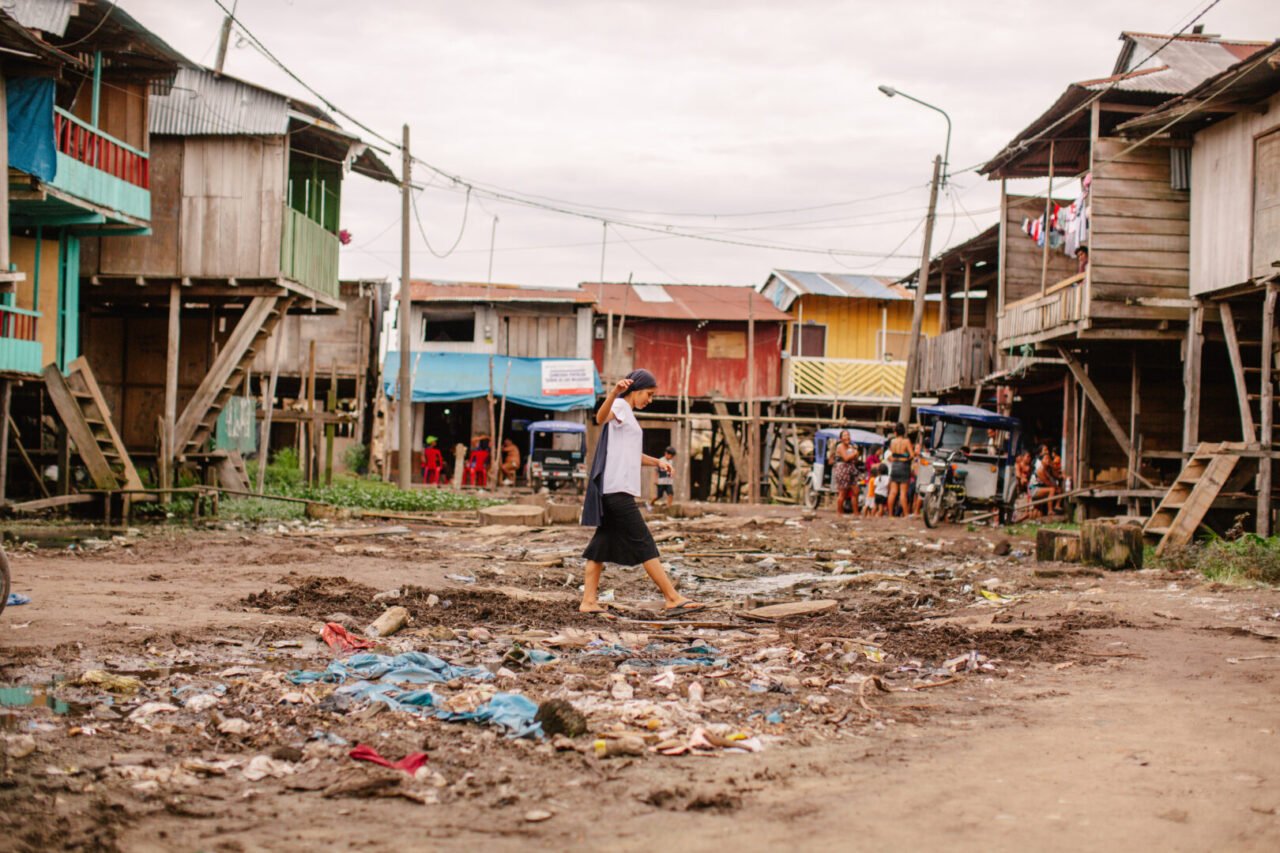
There’s no single cause — poverty is a web of connected factors and challenges that keep people trapped in hardship. Among the most common drivers:

“The biggest challenge that we are facing in this area is lack of access to clean water,” says Anazazi, a mother in Kenya. “… If we had clean water in the community, it would really help us and help us to live a good life.”
Extreme poverty impacts entire communities, but children and women are often hit hardest.
Poverty and children are tragically intertwined. Extreme poverty limits potential and opportunity. It means going to bed hungry, missing school, and growing up without safe places to play or learn. In recent years, the number of children living in poverty has surged, with an estimated 356 million children now affected globally. That’s more than the entire population of the United States.
For children, the impact of poverty runs deep:
Yet children are also the key to breaking the cycle. When a child gains access to clean water, health services, and education, their lives and their communities begin to change and thrive.
After decades of progress in reducing poverty, gains have slowed, and in some places, reversed, following the COVID-19 pandemic. In some regions, poverty is now worse than it was five years ago.
Based on decades of research and field experience, these solutions are the most impactful to break the poverty cycle:
Faith-based poverty relief offers more than material support — it revives hope. World Vision integrates spiritual development into our poverty-tackling work through a curriculum called Biblical Empowered Worldview. This approach helps people understand their worth, purpose, and potential through the lens of faith.
Our Christian identity has shaped how we serve. We partner with local churches not just for physical needs, but to nurture spiritual and emotional healing. This model of faith-based poverty relief deepens trust and long-term impact.
A study from Baylor University found that faith-based organizations often outperform others in building sustainable support systems, due to deep-rooted community engagement and volunteer mobilization.
By partnering with leaders from both Christian and other faiths, we create meaningful change in communities. These leaders use their trusted influence to address important issues such as child protection, public health, and social well-being. Through programs like Channels of Hope, World Vision equips them with training, accurate information, and tools to promote social norms while offering spiritual and emotional support. This approach leads to measurable improvements in health, safety, and community development around the world.
We are one of the world’s largest Christian humanitarian organizations, serving children and families in nearly 100 countries.
What sets us apart:
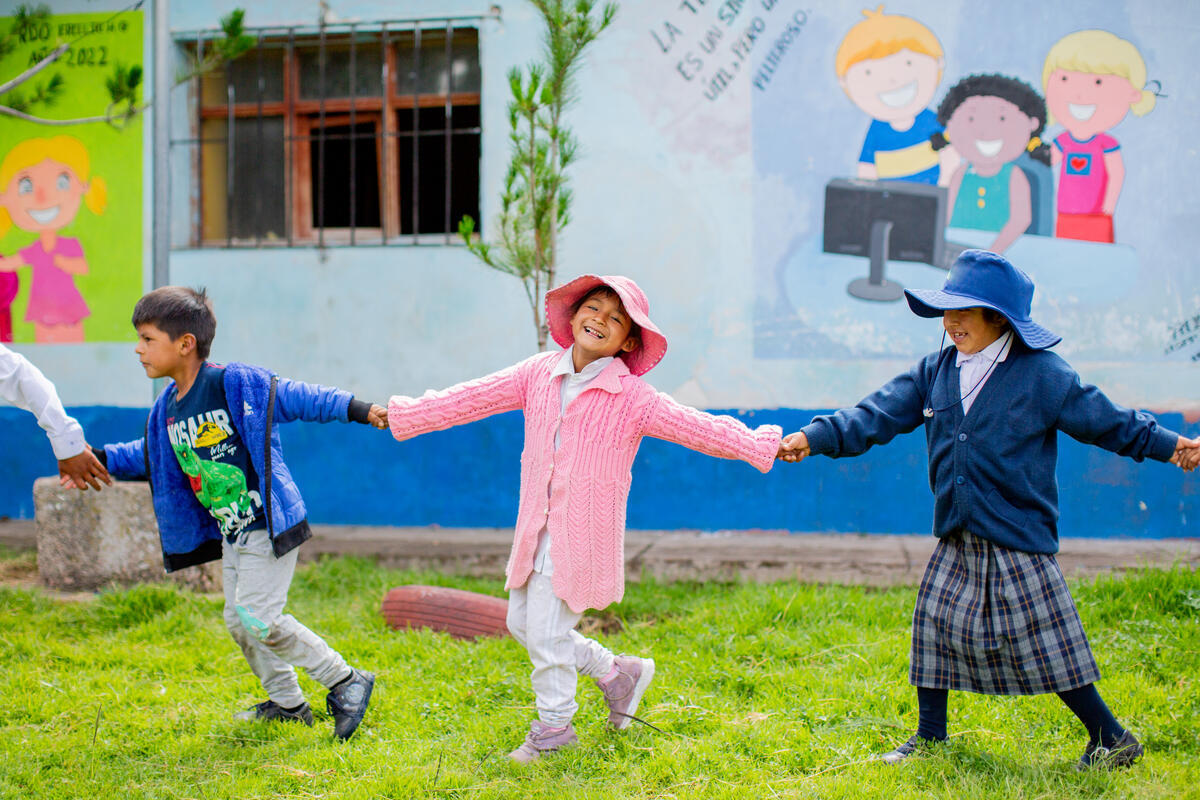
One of the simplest ways to break the poverty cycle is by giving families access to clean water. It means fewer missed school days, lower risk of disease, and more time for work and for kids, time to learn and play.
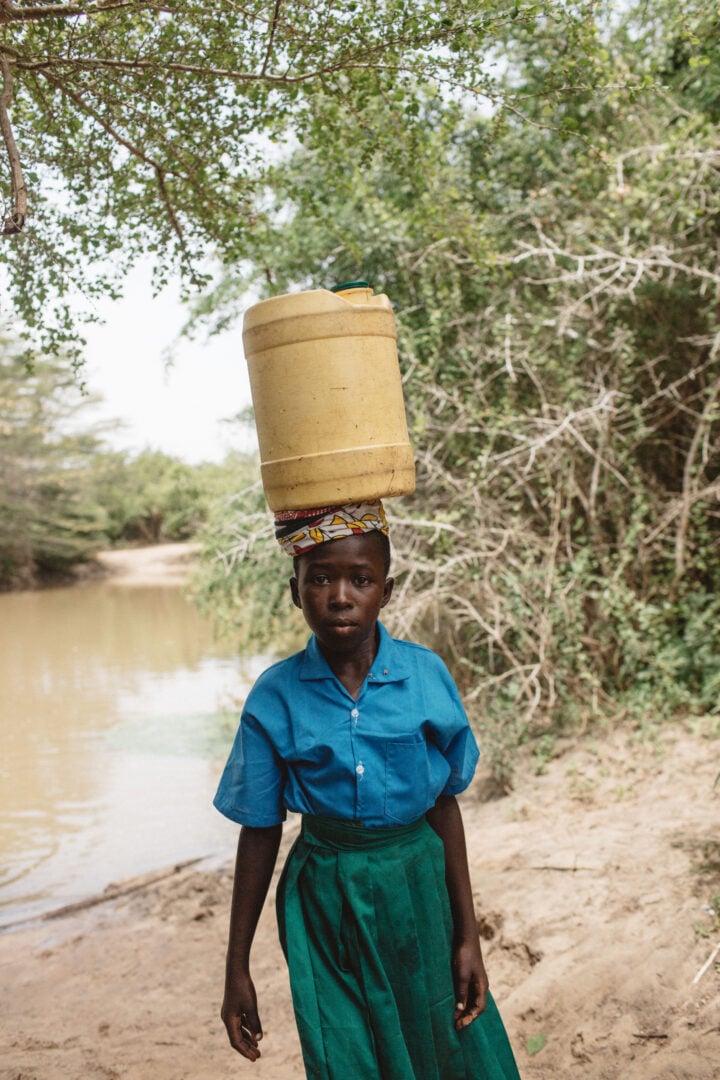
In Kenya, 15-year-old Grace has experienced this. For four years, she and her siblings rose before dawn to gather water from a distant, unsafe source. The burden was physical — carrying more than 22 pounds of water in one haul — and deeply emotional. “I was a little bit scared,” Grace says. “I am scared of the darkness.”
Gathering often caused her to miss school. Contaminated water also made her sick. She says, “I would feel like there is a needle or a thorn poking inside my stomach.”
That changed when World Vision, part of its community development work, installed two water points, including one at Grace’s school. Today, Grace attends classes regularly and dreams of brighter days.
Clean water is more than a basic need: It protects health, restores dignity, and opens the door to education and opportunity.
Stories like Grace’s show the power of simple acts, like access to clean water. Together, we can continue breaking the cycle of poverty for families around the world.
When women and girls are empowered, entire communities thrive.
In Ethiopia, literacy classes have helped mothers earn income and support their children’s education. In Kenya, thousands of women join savings groups to launch small businesses and build economic resilience.
When one woman is empowered, the ripple effect extends to her family, her village, and the next generation.
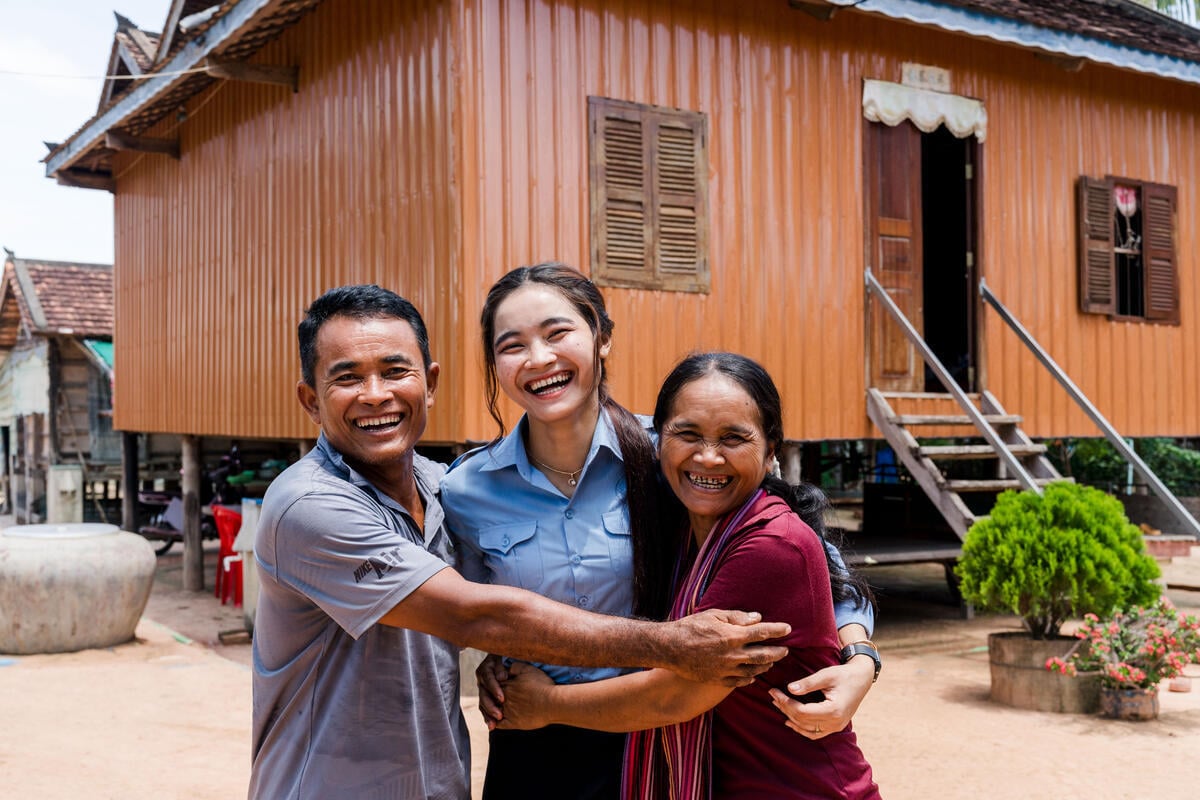
Former sponsored child Phanet (pictured above at age 19) now teaches fifth grade in the same rural Cambodian classroom where she once studied. With support from World Vision’s sponsorship program, her family’s farm grew into a thriving business, and Phanet overcame challenges to pursue her education. Today, she is determined to pass on the gift of learning to the next generation, while continuing to dream for herself.
Prisca (shown below at age 20), whose confidence had been shaken by unexpected pregnancy and economic pressure, experienced renewal firsthand through World Vision’s Biblical Empowered Worldview training.
“Before [Biblical] Empowered Worldview, I was looking at life in a very narrow way. I thought that earning money was very difficult. Especially after I got pregnant, it’s like I became more closed.”
The training reframed her vision. “[Biblical Empowered Worldview] taught us to see how we can look at life in a broader way and be able to develop ourselves,” Prisca says. “It has helped me to be able to figure out how to improve myself. I’m able to do business on my own and see how I can develop myself.”
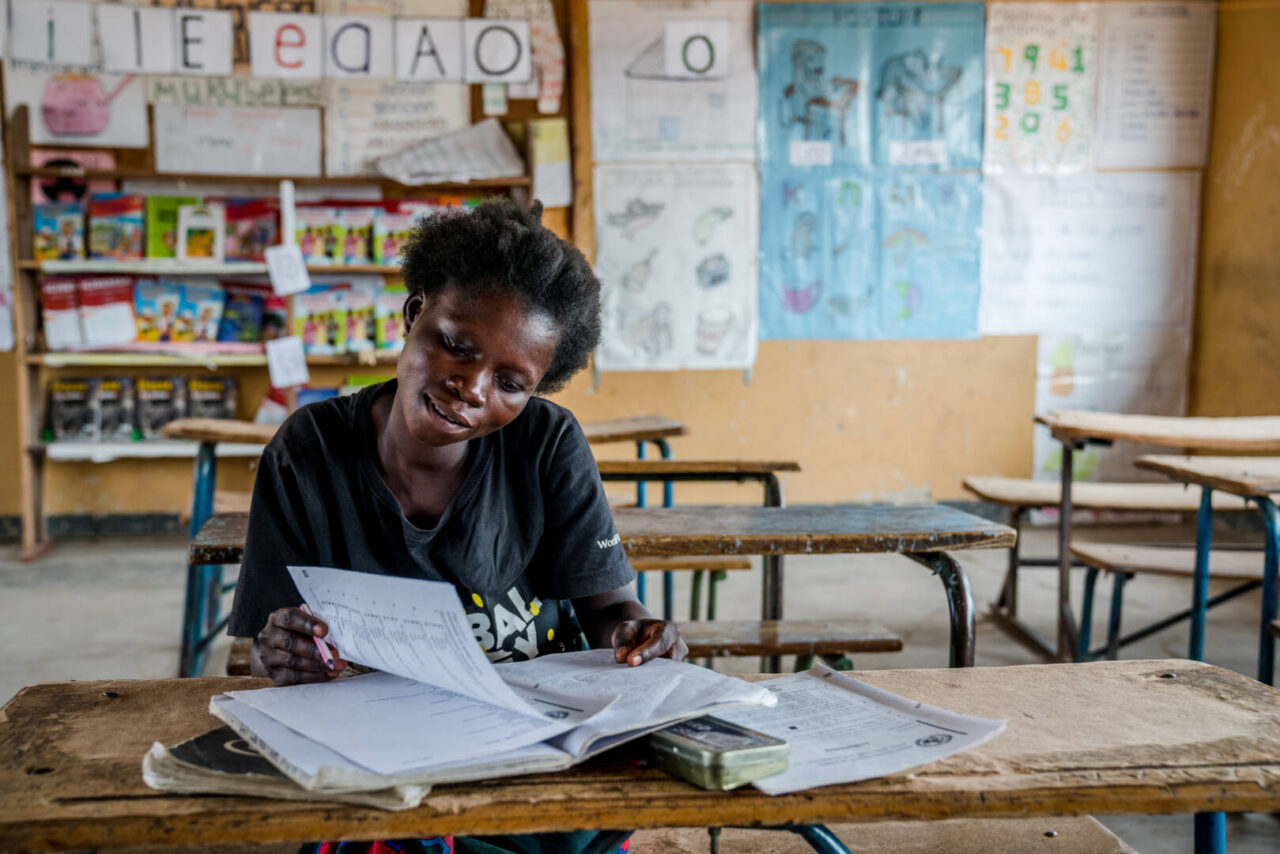
Today, she dreams of becoming a teacher and one day building a home for herself and her son, Lazarus. “Even for my son, I want him to go to school and to be educated so he can even be better than me in the future.”
This is the power of faith in action: practical tools, spiritual renewal, and the chance to reimagine a future beyond poverty.
Real change starts with informed action. You can:
The post What is extreme poverty and how can we end it? appeared first on World Vision.
Ebola, or Ebola virus disease, is a highly contagious and potentially deadly illness caused by ebolaviruses. It has gained worldwide attention because of severe outbreaks in Central and West Africa. While Ebola can devastate families and communities, it is possible to reduce its spread and impact through prevention, early detection, and coordinated efforts.
Today, Ebola remains a threat. In September 2025, the Democratic Republic of the Congo (DRC) declared its 16th recorded outbreak in Kasai Province, with confirmed cases and deaths reported. This highlights the importance of global awareness and preparedness against Ebola.
Ebola virus disease, formerly known as Ebola hemorrhagic fever, is a rare and often deadly disease in humans caused by infection with one of four ebolavirus strains: Zaire, Sudan, Bundibugyo, or Taï Forest.
The 16th recorded Ebola outbreak in the DRC was declared on September 4, 2025, in Kasai Province.
“Ebola is a deadly disease that devastates families and communities, and we are deeply saddened by the loss of life in Kasai,” said Aline Napon, National Director for World Vision in the DRC. “Ebola is highly contagious with potentially high fatality rates. We have done a lot of work in response to past outbreaks to limit their spread and reduce transmission. Ebola creates a great deal of fear in communities, and responding to it can be challenging for under-resourced health services and community health workers.”
Symptoms of Ebola virus disease include high body temperatures, headache, abdominal pain, diarrhea, vomiting, and both internal and external bleeding, such as from gums and stool.
It can be challenging to distinguish Ebola from other diseases, such as malaria, typhoid fever, and meningitis. Symptoms typically appear from 2 to 21 days after contracting the disease. People who have contracted the disease can’t transmit it to others until symptoms appear.
While there is no proven, licensed treatment for Ebola, early symptom management and intravenous fluid hydration can improve survival rates. Ongoing research efforts are exploring potential treatments, including antiviral drugs and immunotherapies.

World Vision responds swiftly to Ebola outbreaks by educating affected communities, supporting healthcare workers, providing child protection and psychosocial support, ensuring access to clean water and sanitation, and delivering emergency relief. We aim to help communities stay safe and resilient in the face of this deadly virus. A few of our key programming areas include:
Community education: We equip communities with information about Ebola prevention, transmission, and the importance of early detection. We help raise awareness to ensure people know how to protect themselves from the virus.
World Vision’s Channels of Hope programming: We train and equip religious leaders to share accurate information about Ebola prevention and treatment, dispel myths and misconceptions, and promote safe practices within their congregations and communities. By working with these local faith leaders, who have a great deal of influence because of how much their communities trust them, World Vision seeks to enhance awareness, reduce stigmatization, and encourage early detection and treatment of Ebola cases. The collaborative approach between faith-based organizations, communities, and health agencies has played a vital role in controlling the spread of Ebola and providing support to affected individuals and families.
Child protection: We offer psychosocial support to children who may have lost family members or been affected by the outbreak. We work to keep children safe and emotionally supported.
Healthcare support: We supply healthcare workers with medical supplies, protective gear, and training so they can safely care for Ebola patients.

World Vision swiftly responded to the 2014 Ebola virus outbreak in Sierra Leone. We did this through a comprehensive effort to protect children and their families. With a strong focus on health and safety, awareness and prevention, safe burials, and social and economic recovery, World Vision played a crucial role in combating the epidemic. Our initiatives ranged from providing personal protective equipment and hygiene kits to launching extensive education campaigns and training local leaders on virus prevention. Through our efforts, we successfully prevented Ebola-related deaths among the children and families we supported. And we contributed significantly to the containment of the outbreak. Our approach encompassed immediate medical needs, long-term recovery, and community resilience.
When Ebola struck Sierra Leone in 2014, World Vision was already working in 25 program areas. We were serving an estimated 58,000 children and their families. Building on 20 years of community development in Sierra Leone, we joined communities, partner agencies, and every level of government in the battle against Ebola.
During the emergency response, World Vision reached 1.6 million people through these and other initiatives:
Jonathan Bundu, Karen Homer, Chris Huber, Heather Klinger, Denise C. Koenig, Sahr Ngaujah, and Sevil Omer, all of World Vision, contributed to this article.
The post 2025 Ebola virus outbreak: Facts, FAQs, and how to help appeared first on World Vision.
Imagine having only minutes to decide what to take and what to leave behind. Your home, your school, your community — lost in an instant. For millions, this isn’t just a worst-case scenario; it’s reality.
Emergencies rarely come with a warning. They strike fast — with the roar of wildfire, the jolt of an earthquake, or the silence that follows lost communication. Whether it’s a natural disaster, a power outage, or a humanitarian crisis, having a plan ready can mean the difference between chaos and calm.
Emergency preparedness isn’t about fear. It’s about responsibility, not just for ourselves but also for our loved ones, our neighbors, and our most vulnerable community members. We’ve seen firsthand how small steps taken before a disaster can save lives and bring hope back.
Proverbs 27:12 tells us, “The prudent see danger and take refuge.” As people of faith, we prepare not out of fear, but out of love for our families, for our neighbors, and for those God calls us to serve.
To prepare for an emergency, you’ll need to make a plan for your household, build an emergency supply kit with food and water, and stay informed about risks in your area. You’ll also need to store important documents, medications, and contact info, and you’ll want to practice your plan regularly and keep your kit updated. Preparation can save lives and reduce panic.
Let’s walk through, step-by-step, on how to prepare for a disaster or emergency so you can be ready, equipped, and empowered. In this guide, you’ll discover:
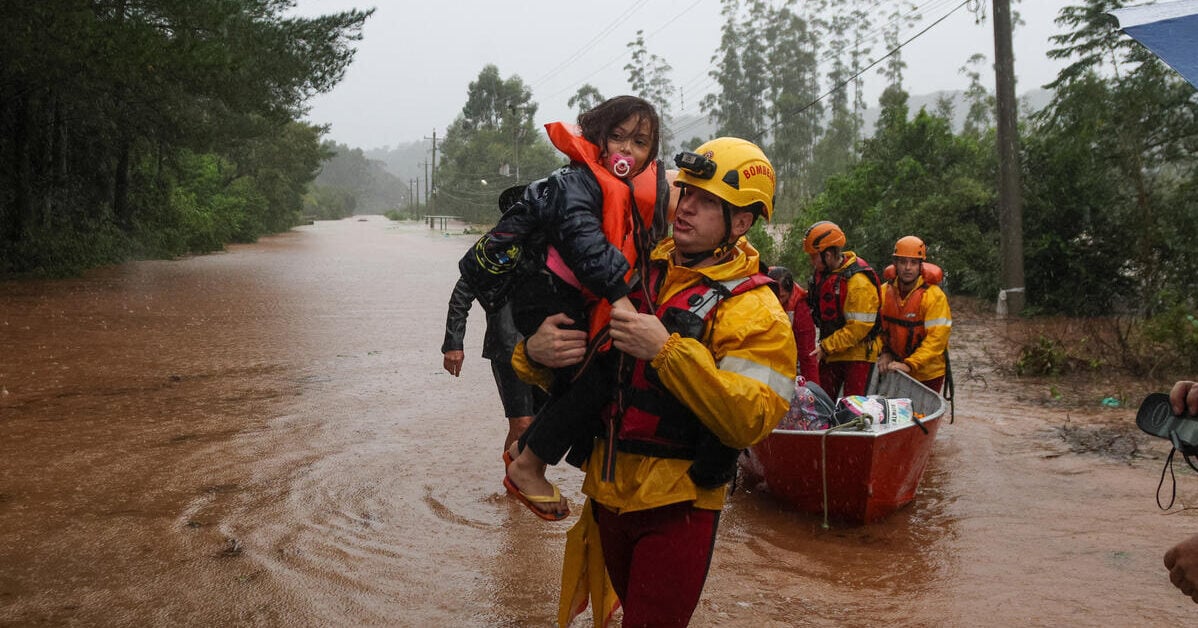
Disasters come in many forms: hurricanes, floods, earthquakes, wildfires, armed conflict, pandemics, and more. Emergencies can unfold without warning, leaving little time to act.
Preparedness saves lives and reduces suffering. Children, the elderly, and people with disabilities are especially at-risk during emergencies. Having a plan helps protect the most vulnerable. Proverbs 27:12 reminds us: “The wise see danger and take cover.”
A frequent sentiment after a disaster is wishing one had done things differently or been more prepared.

“I wish before the hurricane, I had known not to underestimate the power of the floodwaters and the storm,” said Mateo Magana (pictured above) of Swannanoa, North Carolina.
On September 26, 2024, Hurricane Helene — a catastrophic Category 4 storm — roared ashore in Florida and devastated North Carolina. It destroyed Mateo’s home, where he lives with his grandparents.
“If I could go back, I would definitely have a bag ready and packed,” he said.
Being prepared and self-sufficient is crucial, as disasters in the U.S. can overwhelm emergency services. It’s essential for households to be able to sustain themselves for at least 72 hours.
This three-day standard, recommended by FEMA and the American Red Cross, aligns with global best practices, emphasizing the importance of readiness regardless of where a disaster occurs.
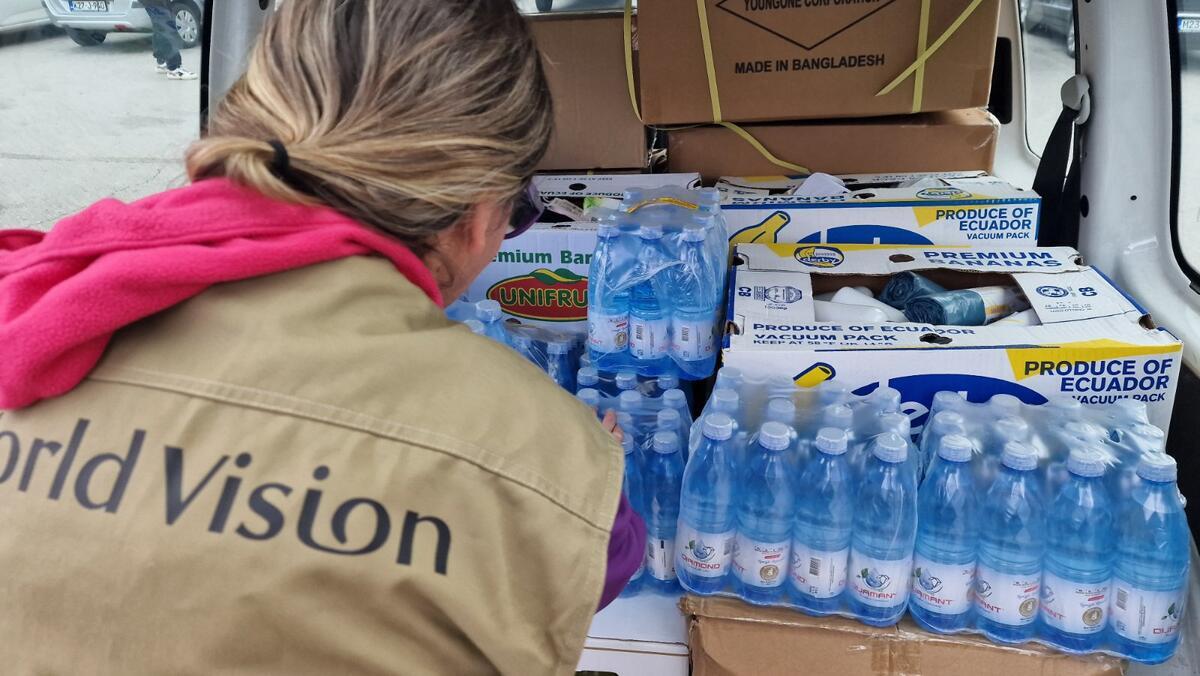
In Europe, the European Union has recently adopted a similar strategy. In March 2025, the EU urged its 450 million citizens to stockpile essential supplies to last at least 72 hours. This recommendation is part of the EU’s Preparedness Union Strategy, which aims to enhance resilience against emerging threats such as extreme weather, cyberattacks, and geopolitical tensions.
Mike Bassett, World Vision’s U.S. Programs emergency response manager, has responded to U.S. disasters for nearly 10 years — from the devastation of Hurricane Harvey in 2017 to the Central Texas flooding in July 2025.
“When a family is prepared for disaster, they are protecting the most important thing, the lives and safety of their family,” he explains. “I have heard numerous times from survivors of a disaster say, ‘I am just thankful we are safe; things can be replaced, lives can’t.’”
Here are the steps you can take to make your emergency plan and supply kit.
*Sources adapted from the U.S. government resources, including Ready.gov, the U.S. Centers for Disease Control and Prevention, and the Federal Emergency Management Agency.
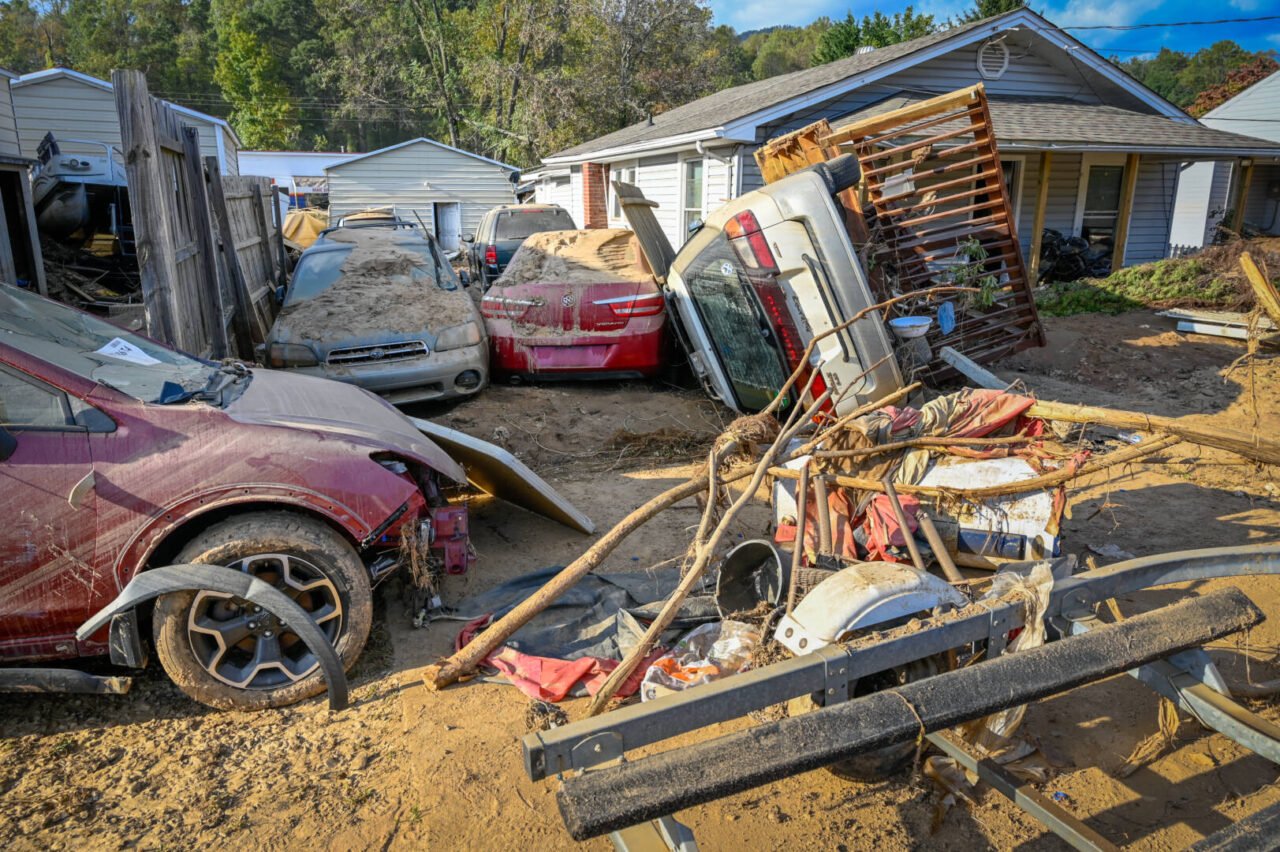
In moments of fear or panic, God’s word brings peace, so it can be wise to also create a spiritual readiness kit into your regular emergency kit. We encourage families to prepare holistically, combining physical safety with spiritual resilience. Being ready is an act of faith and love. God calls us to care for one another, especially in times of trouble. Jesus said, “Love your neighbor as yourself.” (Mark 12:31)
Bring faith into your emergency readiness:
“God is our refuge and strength, an ever-present help in trouble – Psalm 46:1
“So do not fear, for I am with you; do not be dismayed, for I am your God. I will strengthen you and help you; I will uphold you with my righteous right hand. – Isaiah 41:10
“Peace I leave with you; my peace I give you. I do not give to you as the world gives. Do not let your hearts be troubled and do not be afraid. – John 14:27

At World Vision, we believe preparation is an act of love. We help families before, during, and after disasters to stay safe, recover faster, and hold onto hope. Isabel Gomes oversees World Vision’s emergency responses worldwide — from conflicts and refugee movements to devastating natural disasters. With decades of experience, she knows what it takes to reach vulnerable communities quickly and effectively.
“I’ve seen firsthand how preparedness changes everything. In the chaos of an emergency, it’s the difference between despair and survival,” Gomes said. “What makes our humanitarian responses truly powerful is our local teams — they know the communities, they understand the needs, and they’re often the first to act. We prepare not just with supplies, but with compassion and trust — because every life we reach matters deeply.”
For World Vision, responding immediately has been a daily reality — a commitment rooted throughout the history of our work, and continues to guide us. Scripture calls us to welcome the stranger, to stand with the displaced, to love our neighbors as ourselves. World Vision is often among the first to respond when disaster strikes. In 2024 alone, we responded to 87 disasters and humanitarian crises across 65 countries, supporting over 35 million people in emergencies.
Here’s how we help:
Thanks to decades of experience, World Vision is uniquely positioned to respond swiftly and compassionately — delivering hope when it’s most needed.
Learn more about our disaster relief work.

You can help by taking the next step with us:
The post How to prepare for an emergency appeared first on World Vision.
Hurricanes begin as small disturbances over warm ocean waters, but within days, they can intensify into deadly, high-speed storms capable of widespread destruction. Hurricanes like Helene, Milton, and Katrina have shown how quickly a storm can strengthen, unleashing catastrophic winds, flooding, and devastation in their path.
Already this year, Hurricane Erick made landfall in Mexico on June 19, 2025, as a powerful Category 3 storm, marking the earliest major hurricane on record to strike the country before July, and signaling the potential for an active season ahead.
As the 2025 Atlantic hurricane season begins on June 1 and runs through November 30, the National Oceanic and Atmospheric Administration (NOAA) warns of a potentially intense season — possibly echoing 2024, which was one of the costliest seasons on record. When hurricanes strike, they can flatten homes, knock out power grids, and leave residents without clean water, food, or shelter.
To help you stay informed and prepared, here are key facts about hurricanes, including how they form, how to protect you and your family, and how to support those impacted. Discover how World Vision is responding to help vulnerable communities recover from these powerful storms.
NOAA officials predict there is a 60% chance of an above-normal season, a 30% chance of near-normal activity, and just a 10% chance of a below-normal season.
The 2025 hurricane forecast calls for 13 to 19 named storms, with six to 10 expected to become hurricanes and three to five reaching major hurricane strength, defined as sustained winds of more than 110 mph (177 kph). For comparison, a typical Atlantic season sees:
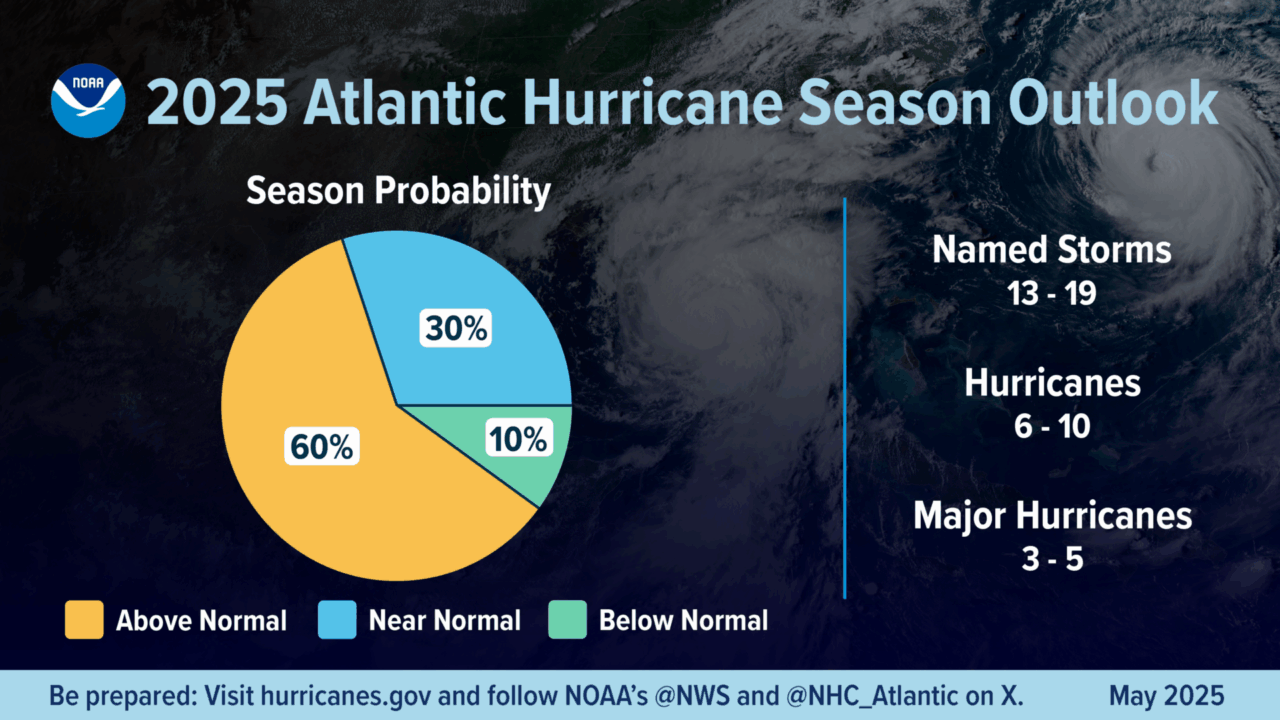
Hurricane season varies by region, but September is the most active month for hurricanes globally. Here’s a breakdown by region and when storms are most likely to occur:
If a hurricane is forecast for your area, it’s important to take the following steps to ensure your safety and preparedness:
Want more tips? Visit ready.gov for up-to-date resources and information.
A hurricane is an extremely strong storm that gains power from warm tropical waters. According to NOAA, hurricanes often start as low-pressure areas called tropical waves, which move through moist tropical regions.
As these weather systems move across the tropics, warm air from the ocean rises into the storm, creating an area of low pressure underneath. More air rushes in, which then rises, cools, and forms clouds and thunderstorms. The water in the clouds condenses, releasing heat that fuels the storm even more.
When the storm’s wind speeds reach 74 mph (119 km/h), it is officially classified as a hurricane. The term “hurricane” is interchangeable with “tropical cyclone” and “typhoon” — they all refer to the same type of weather phenomenon, but are called different names depending on their location in the world.
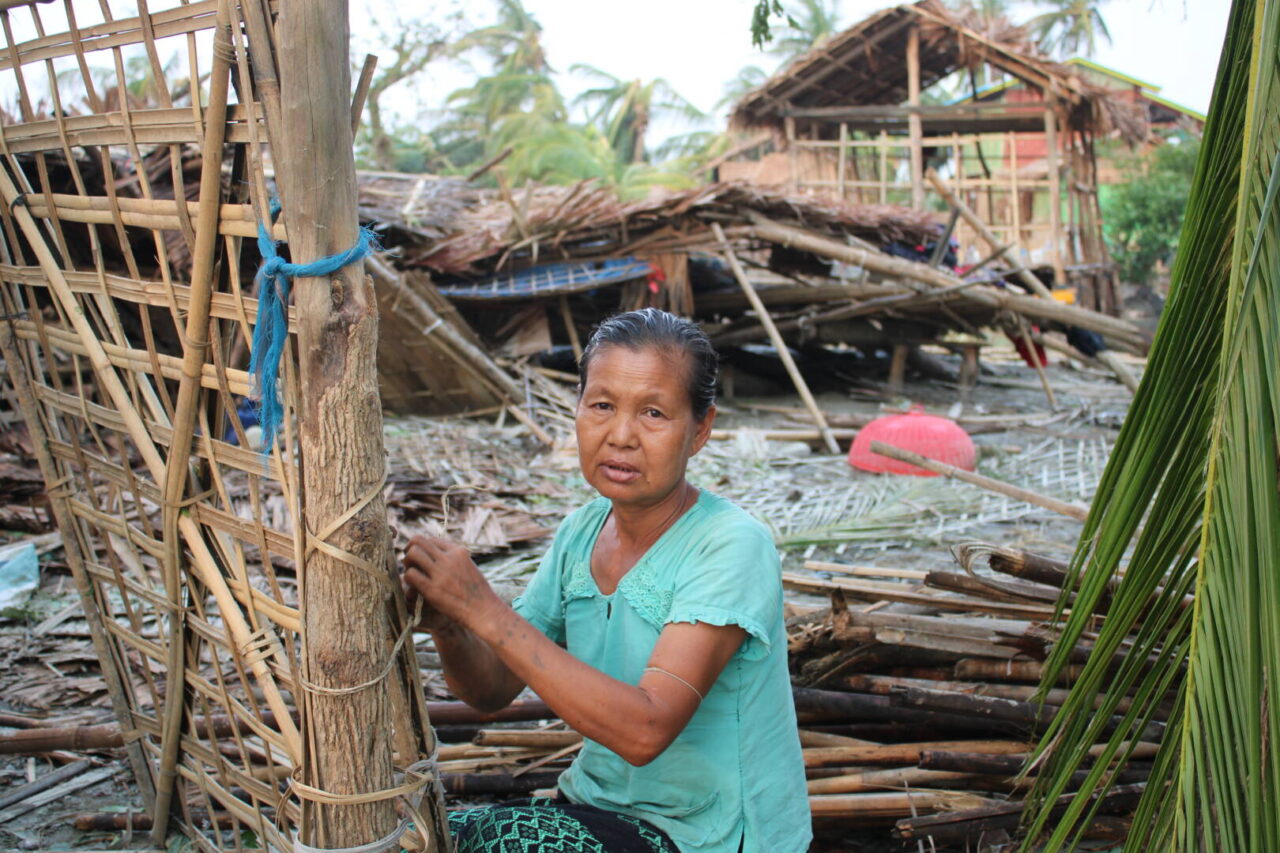
Hurricanes are complex weather systems, and their characteristics can vary depending on the storm’s intensity, size, and other factors. However, their main features can be summarized as follows:
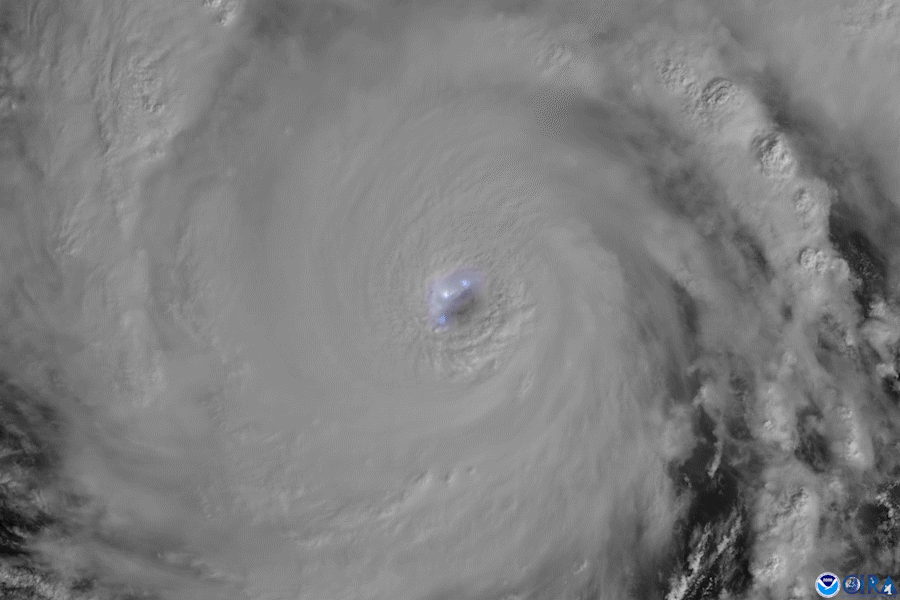

Hurricanes pose significant dangers due to several factors. The powerful winds can damage or destroy buildings, homes, trees, and other property, and knock out power over huge areas. People can be lifted off their feet by high winds or injured by flying debris.
Coastal areas are vulnerable to storm surges, which can result in flooding and over-saturation of the ground, increasing the risk of landslides. Rural communities are often cut off when landslides destroy roads and disrupt power infrastructure. The destruction can leave children and people who rely on regular medical treatment or supplies especially vulnerable. Even after a hurricane passes, damaged materials need to be removed from flooded homes, as lingering moisture can foster the growth of dangerous mold.

The distinction between a tropical depression, tropical storm, hurricane, and major hurricane is the wind speed:
A hurricane category, determined by the Saffir–Simpson hurricane wind scale, lets people know how powerful the hurricane will be:
Meteorologists name tropical storms and hurricanes to avoid confusion and streamline communication. Before the 1950s, storms were identified in chronological order during a given year, but this occasionally led to miscommunication when multiple storms were happening. Since 1953, the World Meteorological Organization (WMO) has named tropical storms and hurricanes using a strict system: a 21-letter list of names, alternating between male and female names, on a six-year rotation. The list excludes the letters Q, U, X, Y, and Z. Every seventh year, the names recycle, unless the WMO decides to retire a name because it was particularly deadly or costly. Here’s the list of tropical cyclone names for the next six years.
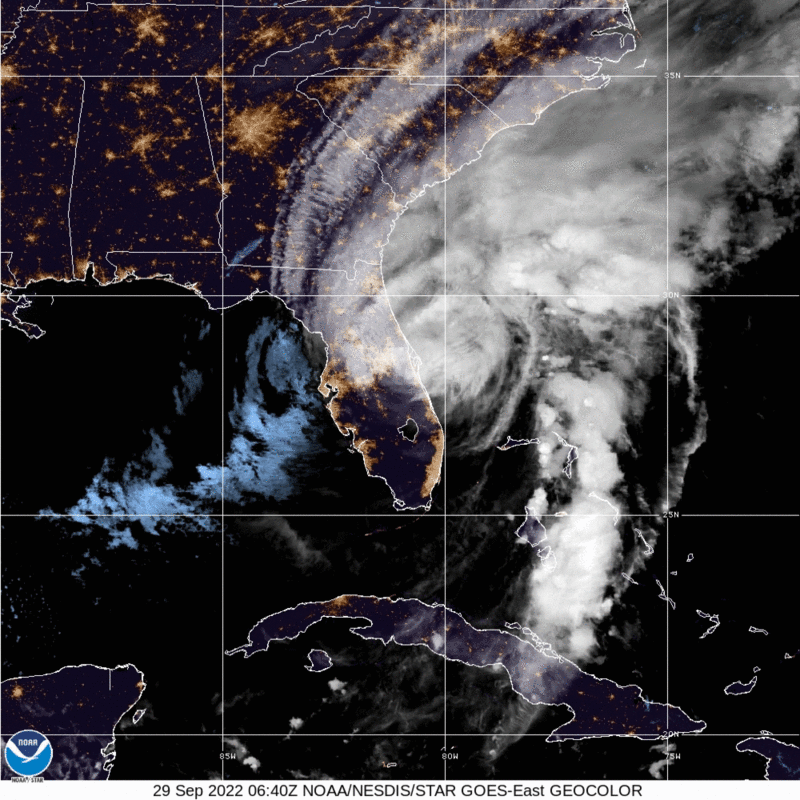
The 2022 Atlantic hurricane season stands out as especially deadly and destructive in recent years. Hurricane Ian made landfall along the southwestern Florida coast on September 28, 2022, bringing catastrophic damage with its high winds, heavy rainfall, and storm surges.
Hurricane Helene, which came ashore in Florida on September 26, 2024, as a Category 4 hurricane, carved a huge swath of destruction across six states — Florida, North and South Carolina, Georgia, Tennessee, and Virginia — including in communities hundreds of miles inland that are not typically in the path of hurricanes. The death toll from Helene was second only to Hurricane Katrina in 2005.
*Costs have been adjusted for inflation.

With decades of experience and an established global network of trained emergency staff, World Vision responds to multiple major emergencies at any given time, including earthquakes, conflicts and refugee crises, floods, and hurricanes.
In 2024, World Vision responded to 84 disasters and emergencies across 65 countries, delivering lifesaving aid and ongoing support to more than 35.2 million people.
During and after a crisis, we provide food, water, hygiene, and other basic relief items, including cleanup supplies. We also promote personal hygiene practices to guard against deadly disease outbreaks. Our child protection programs respond to urgent cases, such as children separated from their families, abuse, exploitation, and other forms of violence. We also respond to health, nutrition, and education needs.
We aim to support families in the immediate aftermath of a disaster and throughout the challenging process of rebuilding their lives and livelihoods. World Vision works alongside communities to help families rebuild their homes and establish permanent housing, sustainable access to clean water, food security, and access to quality education.

In the wake of disasters in the U.S., we are often one of the first organizations to respond. With our decades of experience in emergency response, fully staffed and stocked warehouses around the nation, and a network of over 3,300 partners, we’re able to provide immediate relief to affected children and families through essential supplies.
Thanks to the generosity of our donors and partners, we have been able to make a lasting impact together. In 2024, in partnership with 27 churches and nonprofits, we served 52,465 children and adults through emergency and disaster relief in the U.S. and Mexico.
The post Hurricanes: Facts, FAQs, how to help appeared first on World Vision.
The post Discovering my father’s life of audacious faith appeared first on World Vision.
Tornadoes strike the U.S. every year and have touched down in all 50 states. But weather patterns are shifting. According to the Associated Press, deadly tornadoes are now hitting more frequently in the densely populated, tree-covered mid-South, and moving away from the traditional “Tornado Alley” of Oklahoma, Kansas, and Texas.
The latest outbreak hit on May 16 and 17, when powerful tornadoes tore through Kentucky, Missouri, and Virginia, killing more than two dozen people and leaving widespread devastation across the region.
Stay informed. Stay prepared. Learn how to protect yourself and your family with essential tornado safety tips—and see how World Vision is responding to help affected communities, and how you can make a difference.
The most recent tornadoes to impact the U.S. occurred on May 16–17, 2025, with devastating effects in Kentucky, Missouri, and Virginia.
This outbreak is part of a broader trend in 2025, with hundreds of tornadoes reported across the U.S. this year.
For real-time tracking and historical data on tornadoes, visit the University of Michigan’s Tornado Paths website.
Dear Heavenly Father, we lift up children and families affected, praying for their safety and protection during this challenging time. We also pray for strength and endurance for the emergency responders working tirelessly to provide aid and support.
Tornadoes, also referred to as twisters, unleash intense high winds that can topple trees, flatten buildings, and destroy roads. A significant contributor to their destructiveness is the debris they transform into projectiles. Traveling through a populated area, the funnel of a tornado picks up and carries millions of small and large items, including trees, rocks, trucks, parts of houses, and broken glass. These projectiles can cause damage proportionate to their size and speed when they collide with buildings or homes or crash to the ground.
Tornadoes are now rated on the Enhanced Fujita (EF) scale, ranging from EF0 (65–85 mph) to EF5 (over 200 mph). It is nearly impossible to accurately measure the speed of a tornado, as any measurement device would be destroyed. The EF scale assesses the intensity based on estimated 3-second wind gusts, calculated using 28 different damage indicators — from softwood trees to schools. For example, if a tornado obliterates a large shopping mall or a large section of one, the wind speed would be estimated at 204 miles per hour, characterizing it as an EF5.
An EF5 is the most powerful tornado, causing incredible damage with winds over 200 mph. Capable of destroying schools and large shopping complexes, and causing permanent structural deformation to even 20-story buildings, EF5 tornadoes are rare. They account for only 1% of all tornadoes but are responsible for 37% of tornado-related fatalities. The National Weather Service maintains a list of all the EF5 tornadoes since 1950.
A formidable EF5 tornado struck Moore, Oklahoma, on May 20, 2013, with recorded peak winds of 210 mph. The disaster resulted in the tragic loss of 24 lives, the destruction of over 1,100 homes, and an estimated $2 billion in damages. The disaster stands as one of the costliest tornadoes on record. Just 11 days after that disaster, another EF5 and the largest tornado ever recorded, measuring 2.6 miles across at its peak, hit near El Reno, Oklahoma, on May 31, 2013.
When tornadoes strike, World Vision responds quickly to support families in crisis with essential emergency relief.
After devastating tornadoes swept through Missouri on May 16, 2025, World Vision acted without delay. Our U.S. Programs team dispatched emergency relief supplies to St. Louis, Missouri, and to London, Kentucky, bringing critical items, like diapers, generators, and cleaning supplies, to families in the hardest-hit communities.
The Federal Emergency Management Agency provides guidelines to help you and your family stay safe during and after a tornado. When a tornado warning is issued, taking immediate action is critical. For example:
[/vc_column_text][/vc_column][/vc_row]
The post Tornadoes: Facts, FAQs, and how to help appeared first on World Vision.
The post If we had clean water appeared first on World Vision.